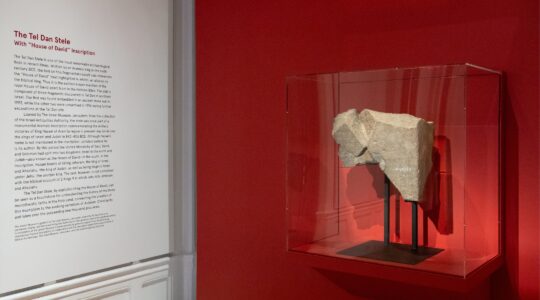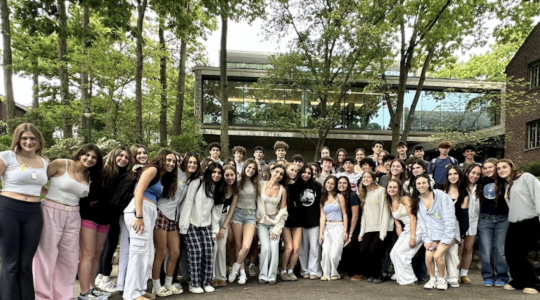Misty and mystical, Santiago de Compostela is the antidote to a Spanish summer. The jewel of Spain’s green, rainy northwest remains cool and fresh while Madrid and Seville broil. Let crowds course down the Ramblas and clog the beaches of the Costa del Sol; Galicia’s shores remain tranquil, and its winding, hilly lanes whisper romance.
Even on sunny July days, Santiago rarely breaks 80 degrees. Summer is also when the local student population empties out, making way for legions of spiritual seekers at the endpoint of the Camino de Santiago, the medieval Christian pilgrimage journey for which this city is most famous.
In Spanish, “Santiago” means St. James. The Camino de Santiago — the Way of St. James — retraces the centuries-old route that wends from France along the Atlantic coast of Spain and winds up in this enchanting city, where the saint’s tomb is said to have marked the spot of today’s Cathedral. Amid the fragrant wisteria vines and dark-green moss, Santiago’s medieval chapels, villas and plazas are all vestiges of its role as a pinnacle of Iberian Christendom.
Yes, Santiago is a holy city for Roman Catholics. But it is also a town with considerable Jewish history — along with an unmistakable spiritual aura that has attracted no small share of Jewish seekers as well. Every year, numerous Jews join in what has become an ecumenical, meditative sojourn for people of all ages and faiths — or no faith at all — finding solace and insight along each step of a communal trek.
The best known of these Jewish pilgrims may well be Gideon Lewis-Kraus, whose widely read 2012 memoir, “A Sense of Direction,” detailed the author’s familial journey along both the Camino de Santiago and spiritual routes in Japan and Ukraine. But Google “Jew on the Camino” and you’ll find numerous accounts of Jews — some Sephardic, many not — who have sought their own meaning in this broadly resonant act.
More Jewish pilgrims from around the globe may soon be returning to Santiago — and elsewhere in Spain, thanks to a law approved by the Spanish Parliament last week. The bill, first proposed in 2012 and set to go into effect this October, would open a path to citizenship for those who can prove Sephardic origin.
While thousands of Sephardim from Venezuela, Argentina and elsewhere have immigrated to Spain in recent years – taking advantage of an already-expedited residency process for Latin Americans — the new law, which does not require applicants to renounce existing passports, should encourage large numbers of Sephardim to reconnect with their Iberian past.
Santiago’s onetime Jewish district, in fact, was located just steps from the Cathedral, where Rúa de Xerusalen (Jerusalem Street) is a reminder of that long-vanquished presence. Another reminder: the ubiquitous almond cake, fragrant and satisfying without being overly sweet, that is sold in pastelerías (bakeries) around Santiago. Known today as the “tarta de Santiago,” it is believed to have its origins in Sephardic cuisine.
Once in Santiago, many visitors fall in love with an ambience unlike any other in Spain. Nowhere else, after all, are the streets filled with pilgrims clutching walking sticks and hoisting backpacks, beaming with the satisfaction of having reached their destination. Soft-spoken locals converse in Galician — a variant of Portuguese that reveals how deeply this region straddles Iberia’s twin cultures.
The city itself is an engaging mix of provincial and cosmopolitan. With its mossy courtyards and stunning views over green mountains, Santiago has the scale and friendliness of a small town. But that impression is belied by its venerable university; the nearby headquarters of Inditex — the company behind Zara, one of the world’s largest retailers; and an increasingly high-profile modern art scene.
Santiago is dotted with small, white-walled art galleries that tend to showcase art with a local flavor; black-and-white palettes and swooping curves are visual signatures. All of these galleries are free, and many host wine-and-cheese nights, children’s events and other activities.
There are at least a dozen museums and cultural institutions in and around Santiago, from the Museum of Santiago and Pilgrimage to the Cathedrals art gallery. The Galician Center for Contemporary Art is the showpiece for both art and modernity in a city defined by its history. With galleries highlighting art from around the Luso-Hispanic world, the Center is an attraction as much for its striking architecture and stunning terrace views as for the works within.
Support the New York Jewish Week
Our nonprofit newsroom depends on readers like you. Make a donation now to support independent Jewish journalism in New York.
The nearby Auditorium of Galicia is another modern landmark. This 1960s-era cultural center, originally built to house pilgrims, is now a venue for concerts and exhibitions set within a spacious park and lake. And it is another reminder of the way this corner of Iberia — once seen as remote — is evolving into a destination for bold, attention-getting architecture.
Parque da Música, the sprawling green lawn just outside, offers picnic sites and children’s playgrounds along with colorful Spanish sculptures. It’s one of many lovely green oases throughout this city — places where pilgrims seeking the divine, the aesthetic or just a beautiful view can relax amid the glories of Galicia.
The New York Jewish Week brings you the stories behind the headlines, keeping you connected to Jewish life in New York. Help sustain the reporting you trust by donating today.




